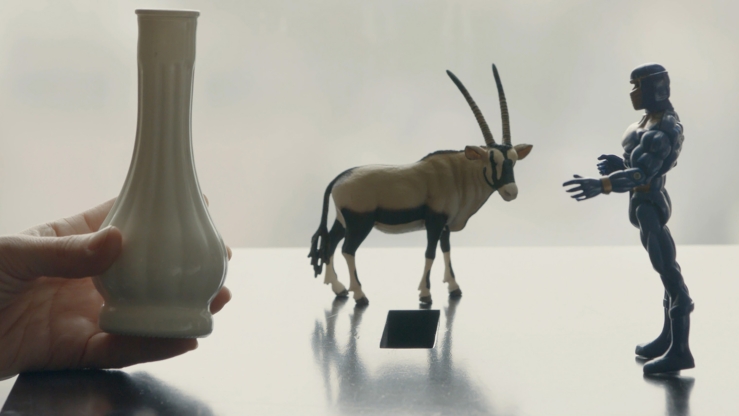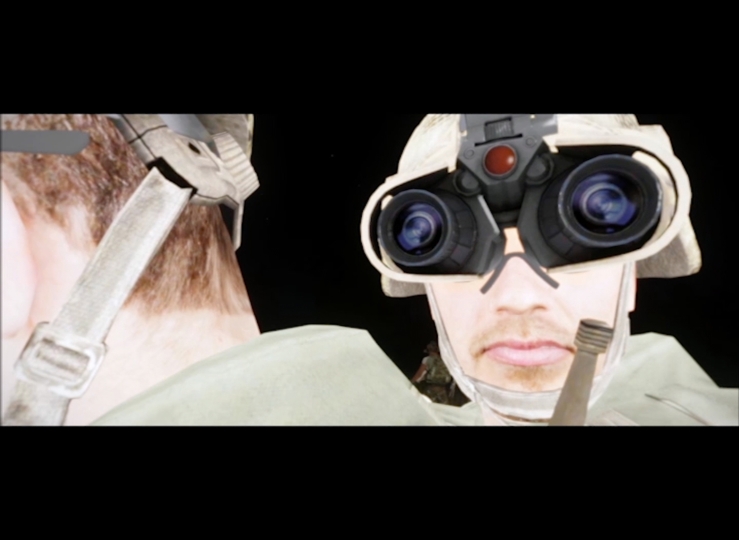Perspective #7: Connecting/Dividing in other words
A perspective on the exhibition of VIDEONALE.19
What is the most striking thing about these works? The presence and absence of words and their fate in the translation process will reemerge as we watch them as non-native speakers/ persons who don't know at least one of the languages. The experience of reading subtitles while watching works is a unique one. Often, when there are two lines of subtitles where one of the alphabets are unknown to the viewer, the visual look of the work and the content being shared are in battle mode.
In Tugging Diary, the fast pace of passing words and images can leave us behind to feel the mood of the street protest by exposing ourselves to the remains of the struggle on the walls while they are defaced/erased. In Trust Studies #1, the accurate pauses in depicting a conversation on a taboo subject and realizing why this work is silent confront us with meta-layers which stay like an afterimage. These pieces often deserve to be watched more than once so they can reveal their poetic qualities beyond the comprehension of their textual content. The violence concealed within these works is exposed differently, via words, maps, models, and reenactments, through recycling found moving images, or, in the case of Trust Studies #1, through tourist guides once made to promote a lost moment in time.
Objects and sounds play a crucial role in In Flow of Words and Buurman Abdi (Neighbour Abdi), but this is not the only subject they share. The process of listening and reflecting lends these two works an emancipatory impetus, a sense of hope, while witnessing disturbances and how affected the people involved remain, sometimes for generations. The burden they bear and the brutality they must endure leak into the language and translations: The testimonies of the remote witnesses and what remains in the mind of the carriers/translators of evidence depart in separate ways. The challenge is to decipher the embedded codes through empathy and mourning or to deal with them in a playful manner.
On the other side of the spectrum, The Mad Man’s Laughter with its length and masterful arrangements plunges the viewer into an abyss of visuals created both to spread fear and to establish mechanisms for producing “the other,” because the enemy is needed as an ingredient to manufacture hope for the victory and a false sense of prosperity. (Mis)translations reveal themselves via artificial intelligence and throughout the history of Hassan Sabbah at the infamous Alamut Citadel.
While we are at the peak of another not-so-cold war, the selection sheds light on the current and recurrent affairs from various angles.
Amirali Ghasemi
It is suggested to watch the selection in the following order:
Eliane Esther Bots | In Flow of Words
Shobun Baile | Trust Study #1
Yan Wai Yin | Tugging Diary
Alaa Mansour | المجنون الضاحك (The Mad Man's Laughter)
Douwe Dijkstra | Buurman Abdi (Neighbour Abdi)
*This perspective was curated for the VIDEONALE.19 exhibition at the Kunstmuseum Bonn. As not all works selected for this perspective may be shown in the online archive, the programme can unfortunately only be viewed incompletely.
About the person
Amirali Ghasemi is a curator, media artist, and graphic designer. He is the founder of Parkingallery, an independent project space in Tehran, as well as its online platform for young Iranian artists. Ghasemi has shown his photographs, videos, and design works internationally.




